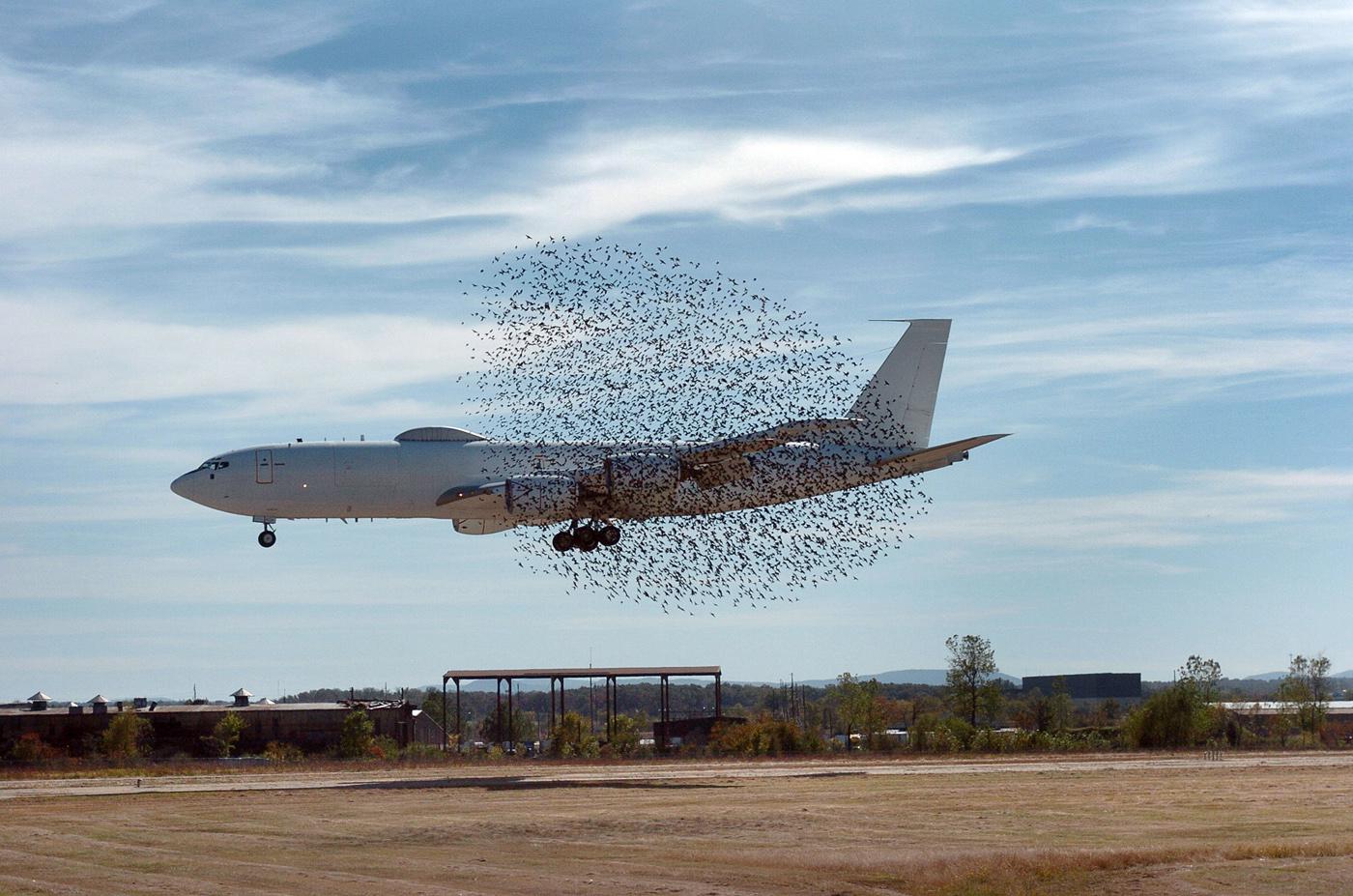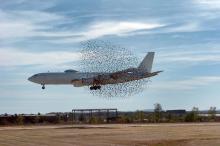Information Possibly Outdated
The information presented on this page was originally released on February 3, 2011. It may not be outdated, but please search our site for more current information. If you plan to quote or reference this information in a publication, please check with the Extension specialist or author before proceeding.
MSU studies alternative grasses for airport safety
It has been two years since U.S. Airways Flight 1549 made an emergency landing in the Hudson River when a flock of Canada geese struck the engines just minutes after the plane took off.
Bird and airplane collisions cannot be completely avoided because the two share the same flying space. But scientists at Mississippi State University are looking to the ground, specifically to the mowed landscape surrounding runways and terminals, for ways to reduce wildlife hazards and possibly provide biofuel sources.
The research team includes scientists in the university’s Forest and Wildlife Research Center, the Mississippi Agricultural and Forestry Experiment Station, and the U.S. Department of Agriculture’s Wildlife Animal and Plant Health Inspection Service. Their focus is to find alternatives for the birds that seek the grass on airfields for food and shelter.
The Federal Aviation Administration reports that more than 108,000 wildlife strikes to airplanes have occurred in the last 19 years. An average of 20 wildlife strikes were reported daily from 2004-2008.
“More than 90 percent of damaging strikes to airplanes were caused by only 19 species of birds, according to the FAA,” said Jerry Belant, assistant professor of wildlife ecology and management. “Nine of these birds are associated with grasslands.”
Bird species involved in the most damaging strikes at U.S. airports use grasslands primarily for foraging, and those species generally prefer well-managed, frequently mown turf grass over mature grasslands, Belant said.
“Airports typically establish turf grasses and maintain the area with frequent mowing,” said Travis DeVault, USDA/APHIS research wildlife biologist. “Mowing these areas can be costly and may actually attract some bird species that pose strike risks.”
MSU scientists are experimenting with an alternative to turf grass. They planted 16 switchgrass and native warm-season grasses at the Golden Triangle Regional Airport and on Lowndes County properties owned by B. Bryan Farms.
The researchers will assess wildlife habitat, biomass production, economic benefit and aviation risk in this long-term experiment.
“Each unit is 20 acres and will include four replicates of each treatment,” Belant said. “Two of the treatments will be mowed once a year, while the other two will be mowed twice a year.”
The different mowing regimes will simulate harvest for biofuel production and forage and also help the scientists determine the frequency of use by wildlife and the associated risk to aircraft.
“In the southeastern United States, switchgrass and native warm-season grasses are promising candidates not only as alternatives for airport use, but also as forage or biofuel sources,” Belant said. “But there is little research available on their economic value in the context of airport environments or on the relative risk of wildlife to aviation safety.”
In other words, these grasses could generate income rather than consume income. Such land-cover options would be especially beneficial for smaller airports that operate on limited budgets, DeVault said.
While the research has just begun, it indicates that airports may need to change their landscape management practices around the runways.
“A grass height of 5 inches is less desirable for most ground-nesting birds,” Belant said.
The scientists also recommend reducing standing water to avoid water-loving bird species. Ten of the most hazardous bird species or species groups are strongly associated with water.
“Airport landscapes intersect home ranges and migratory pathways of animals,” Belant said. “While we cannot change those pathways, we can inform air traffic controllers to avoid high-risk airspace.”
Since 1990, the year the FAA began collecting data on wildlife strikes, the number of bird strikes in the airport environment has declined in the air space less than 500 feet above ground level. However, strike rates have increased at heights more than 500 feet.
“Overall, airports have done a good job of managing birds through deterrents, harassment, and repellents,” Belant said. “Methods that change the landscape and divert birds will reinforce what airports have already done to discourage birds from residing near runways.”
DeVault also said the landscapes around airports must be altered to decrease the number of strikes occurring at higher altitudes.
“Traditionally, wildlife management at airports has occurred in small areas relative to overall animal space use. Wildlife damage management strategies usually occur within the confines of airport property,” Belant said. “But the effectiveness of these techniques depends in part on the surrounding landscape and the ecology of the species involved.”
Land managers and city planners should consider the surrounding landscape and plan accordingly.
“We believe that this research, when complete, will give airports a viable alternative to turf grass, which will not only reduce wildlife hazards but also increase income and reduce the carbon footprint of aviation,” Belant said. “It may also provide an alternative land use for areas surrounding the airport, which are not always considered.”
Contact: Dr. Jerry Belant (662) 325-2996






